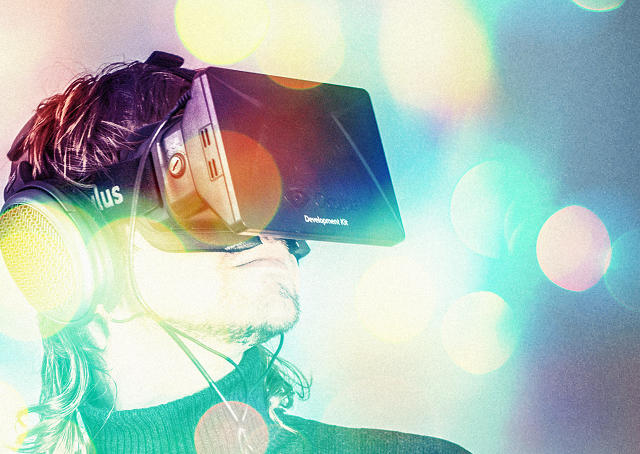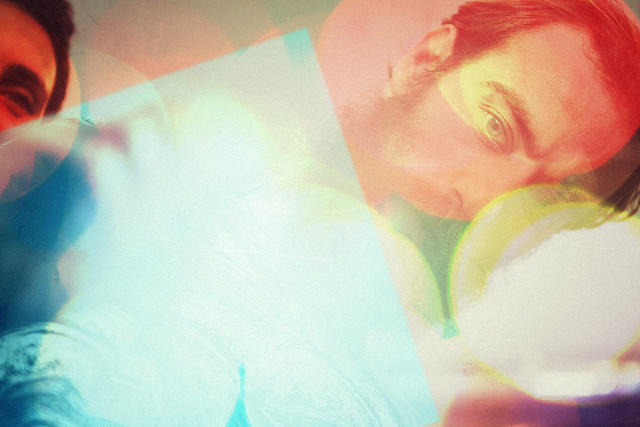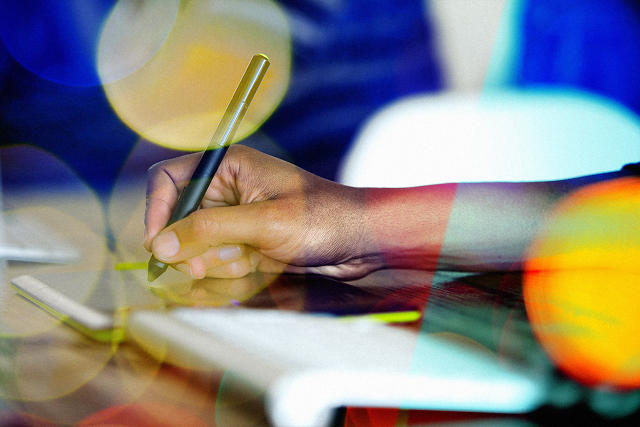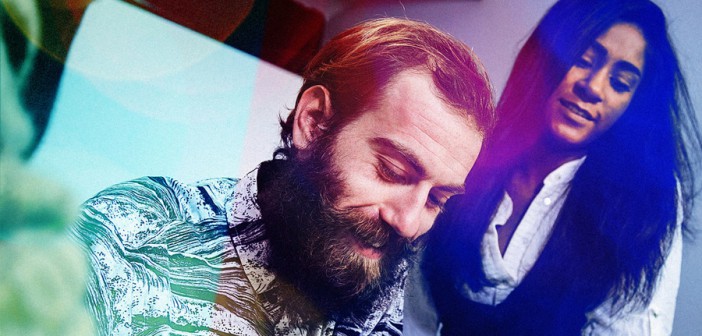DESIGNERS AT GOOGLE, MICROSOFT, AUTODESK, IDEO, ARTEFACT, TEAGUE, LUNAR, HUGE, NEW DEAL, AND FUSEPROJECT PREDICT 18 NEW DESIGN JOBS.
Yesterday’s graphic designers are today’s UX designers. Will tomorrow’s UX designers will be avatar programmers, fusionists, and artificial organ designers? Yes, according to the illustrious roster of design leaders we spoke with here.
Design has matured from a largely stylistic endeavor to a field tasked with solving thorny technological and social problems, an evolution that will accelerate as companies enlist designers for increasingly complex opportunities, from self-driving cars to human biology. “Over the next five years, design as a profession will continue to evolve into a hybrid industry that is considered as much technical as it is creative,” says Dave Miller, a recruiter at the design consultancy Artefact. “A new wave of designers formally educated in human-centered design—taught to weave together research, interaction, visual and code to solve incredibly gnarly 21st-century problems—will move into leadership positions. They will push the industry to new heights of sophistication.”
Here are 18 of the most important design jobs of the future, as identified by the men and women who will no doubt do much of the hiring. Most looked three to five years out, but some peered farther into the future (see: organ designer).
Augmented Reality Designer
Nominated by Gavin Kelly, co-founder and principal, Artefact As technologies for augmented reality evolve, they will allow for new information to be layered over the physical world in seamless ways. This will open up an increasing demand for designers who can deliver intuitive and immersive experiences that are tailored to a wide spectrum of industries, from entertainment to education and health care.

Avatar programmer
Nominated by Glen Murphy, director of UX, Android and Chrome Our celebrity clients will need help in representing themselves best in virtual scenarios such as VR, mobile games, and movies. This job will entail creating a celebrity’s best representation in low-poly, high-polygon variants, and will depend upon rigging a client up for motion capture and text-to-speech emotive output. Some AI-response programming knowledge would be helpful. A version of this job actually exists today (see the digitized actors in L.A Noire), but will become increasingly important and complicated as actors’ likenesses become more prevalent in games and VR. As these representations become more mainstream and more powerful, actors will want increasing control of their image, just as they have in every other form of media.
Chief Design Officer or Chief Creative Officer
Nominated by Yves Béhar, founder, fuseproject The CDO or CCO will be a job in every company, overseeing the design of a business’s every touchpoint and solidifying a fluid visual narrative that can maximize efficiency and purpose. Design is more and more central to the success of the modern business; designers are no longer being brought in at the end of the process to make things look pretty, but rather are providing essential insights from the ground up. In the future, I see a role on every executive team for a designer—someone whose role it is to ensure that every element of the business is designed well, and designed holistically.
Chief Drone Experience Designer
Nominated by Gavin Kelly, co-founder and principal, Artefact As companies such as Amazon deploy unmanned drones in their business, there will be an increased demand for the design of the entire service experience. For example, what are the end customer interactions? How are fleets managed and maintained? How are risks to the population mitigated? How are privacy concerns addressed? How do we build trust in these semi-autonomous machines?
Conductor
Nominated by Bill Buxton, principal researcher, Microsoft Research Carrying on with the musical analogy, design has typically been preoccupied with creating new instruments. However, however wonderful any one of those instruments might be, the true potential is only realized when they play well together—essentially as one. It is the creativity and skill of the conductor that is essential to that happening.
The next “big thing” is not a thing. It is a change in the relationship amongst the things. Without the Conductor’s input, we are on a fast path to hitting the complexity barrier, since the cumulative complexity of a bunch of simple things—regardless of how delightful, simple and desirable they may be—will soon exceed the ability of humans to cope. It is the Conductor who carries the responsibility for the design of those relationships and ensuring that their collective value significantly exceeds the sum of their individual values, and their cumulative complexity is significantly less than the sum of their individual complexities.
Cybernetic Director
Nominated by Matías Duarte, VP, Material Design at Google Cybernetic directors will be responsible for the creative vision and autonomous execution of highly personalized media services. They will train cybernetic art directors and visual-design bots in the distinct visual language of a brand. They will provide conceptual leadership on creative projects from starting point through execution, and will actively participate in the growth and development of machine-learning infrastructure to keep current with innovations.
Cybernetic directors will need to be well versed in the visual language and traditions of North American audiences and their subcultures. The job requires at least four years of formal training in visual communication, graphic arts, modern American studies, or equivalent, and at least 10 years of relevant experience working in media, communications or entertainment. Exposure and familiarity with modern popular Western media is a bonus, but not a substitute. Also requires experience with learning systems training and reasonable fluency in HALtalk 9000, Lovelace++, and human-cyborg relations.
In five years machine learning will enable computers to make the kinds of aesthetic choices that humans make today—the more on the production end of the spectrum, the more quickly it will happen. This will enable massively more personalized experiences. Imagine reading a magazine article where the photo editor wasn’t just aware of you as part of a broad demographic, but knew your visual fluency and consumption more intimately than your spouse. Yet who teaches the computers to make those creative choices? How do we balance the possibilities of personalization when each article wants to have its own editorial flavor, each publication its own style? Training and directing creative machines will be one of the most exciting and important creative jobs of the future. It’s starting today.
Director of Concierge Services
Nominated by John Edson, president, Lunar Retailers will harness the power of big data to give their most valuable customers a higher level of service than the general public. Smart merchants will start acting more like airlines or credit card issuers and really focus on the small percentage of VIP clients who drive a disproportionate percentage of profit. Concierges will provide the kinds of bespoke services normally associated with high net worth brands like American Express Centurion (“The Black Card”): exclusive perks but also customized products and services designed with an extra level of care to match the individual’s tastes.
Embodied Interactions Designer
Nominated by Matt Schoenholz, head of design, Teague Screens have demanded a lot of attention from designers over the past 30 years. After all, they have been the source of so much content and so many interactions. They still require our thoughtful attention, but we will also see the rise of software that only rarely manifests on a screen. Or, perhaps it very much manifests on a screen, but the screen is an overlay on reality or it is outright virtual reality. These new modes of interaction require a new type of designer: one that is focused on embodied interactions. Whether this embodiment is physical or virtual, this new designer is concerned with virtual and augmented reality, as well as the computers embedded into things and spaces. Therefore, this role is expert in interface pattern languages and touch-points that have largely been considered as alternative or merely subservient to screen-based GUIs. This designer will borrow practices from industrial design and architecture, so that she can model interactions that are oriented in space. While these new materials force the designer to be intensely concerned with formal and spatial qualities, they belie a behind-the-scenes complexity that is also paramount. The Embodied Interactions Designer must be comfortable wading neck-deep through datasets to mine value while protecting privacy. She must be adept at persuading disparate business stakeholders of a product’s value and able to fight for the resources required to design it well. She must have foresight to uncover the biases in algorithms and large-scale systems that can negatively impact people.

Paolo Cipriani/Getty Images
Fusionist
Nominated by Asta Roseway, principal research designer, Microsoft Research Early technology was, in its most basic form, like a huge block of ice: not very accessible, clunky, and necessitating specialists to handle. Now as technology melts, it will transform from solid to liquid to gas, permeating almost every aspect of our lives and creating a cross-disciplinary opportunities. Such diffusion will become the foundation for future design jobs. The designer’s role therefore will be to act as the “fusion” between art, engineering, research, and science. Her ability to think critically while working seamlessly across disciplines, blending together their best aspect, is what will make her a “Fusionist.”
While still expertly versed in classical design skills, the fusionist will mix those skills with a “generalist” approach to technology, working across disciplines and interest groups. In many cases, the fusionist may feel like an outlier. The technologies she bridges will require her to expand her own capacities. She’ll need to be an expert collaborator and communicator, extending her vocabulary so that she can reverse engineer her vision into discrete items that specialists can act upon. The Fusionist will remain driven by her passion for the Future and her ability to use Design as the unifying vehicle to drive the best experience.
The global challenges that lie ahead can only be solved by a collaboration of minds and vocations, and a diversity of views. The challenge and reward for the Fusionist will be in her ability to communicate, comprehend, and connect all parties through design. This is already beginning to happen in the emerging fields of biofabrication and wearable technology. Stemming from biotech, biofabrication is a new cross disciplinary movement between the design and science that is generating the next wave of sustainable materials and solutions for our survival. It is not uncommon to see artists and biologists sitting together tackling the same problem. Additionally, wearable technology will see an influx of fashion designers and artists partnered with engineers, in order to create technologies that will go into our fibers and onto our skin. Fusionists will act as the bridges between emerging fields, and their ability to bring all parties together through communication and design will help bring about the greatest experiences.

santypan via Shutterstock
Human Organ Designer
Nominated by Gadi Amit, founder, New Deal Design Human organ designers will be experts in bio-engineering and design, fitting newly created organs and artificial limbs to humans. They will be fully capable of executing end-to-end design and implementation process for ready-to-use or custom-fit organs; have deep knowledge of the software and hardware involved in bio-electronics; and work within a team tackling multiple biological sub-systems.
We are very close to being able to reproduce artificial biologically fitted tissues. Some of these tissues will come from genetic-engineering, some will be manufactured in bio-reactors, and some will be merged with micro-electronics. The prospect of artificially made human organs is just around the corner. Who’s going to design and fit these organs to their end user? Designers will be there, sooner or later
Intelligent System Designer
Nominated by John Rousseau, executive director, Artefact The intelligent system designer doesn’t design discrete objects or experiences, so much as the software systems that make possible the design solutions of others. This designer works as part of a large and diverse network of specialists to create a continually evolving lingua franca of aesthetic production. The systems this person designs will integrate multiple domains, and those domains will themselves be the product of designers, artists, and technologists.

dreamerve via Shutterstock
Interventionist
Nominated by Ashlea Powell, location director, Ideo New York Interventionists are already in our midsts, we just haven’t named the role or cultivated it. As organizations and their challenges become more networked and complex, it will be harder work to help them digest new ideas and build towards a better future . This is the work of an Interventionist, and it’s time that the craft of intervention design takes shape, whether it’s designing an experience that creates transformational empathy or hosting a conversation that puts an end to polemics. These designers will come from backgrounds in organizational psychology or behavior change and be experts in facilitating creative conversations, framing unexpected questions, and navigating the uncomfortable.
Machine-Learning Designer
Nominated by Aaron Shapiro, CEO, Huge A machine-learning designer’s job will be to construct data models and algorithms that allow companies to create artificially intelligent products. Those products will anticipate the needs of users, and fulfill them before the user ever has to ask. Machine-learning designers must not only be designing the experience, but also ensuring that it uses the best algorithms. Data, design, and artificial intelligence will be the next frontier in digital experience. Companies will compete and win based on the personalization and intelligence in their marketing. The companies that have the smartest, most individually resonant products and experiences are going to do the best job of attracting and retaining their users. In this world, good AI will become essential to the user experience and the companies with smart experiences will have an exponential advantage over the ones that don’t.

Flickr user AIGA/NY
Program Director
Nominated by Dave Miller, recruiter, Artefact This is the design agency’s version of a product manger, and the evolution of its entire project management, engagement, and client services departments. This person is a business strategist; they understand the “who,” “what,” and “why” behind a project/product; have a deep understanding of what it means to be a designer and a developer; and also have a track record of effecting change and influencing the end product. They are peer-level to a design director and usually come from creative backgrounds. They have practiced design, research, or engineering. They share ownership of a projects success. They handle timelines and client interactions, while creating long-term relationships founded upon their deep industry experience.
Real–time 3-D Designer
Nominated by Dave Miller, recruiter, Artefact Virtual and augmented realities are on the forefront of design and technology explorations. Interaction design and game design will collide and integrate. Any design team tasked with creating a full experience in this realm will be in need of a 3-D designer.
Game design as an industry is such a focused discipline and craft: It takes years of practice to operate at a high level. With that in mind, senior level 3-D designers will be pioneers, leaving behind game design and joining product teams to create entertainment and productivity tools with complex interaction problems. We will start to see shifts in school curriculum, where both 3-D and UX disciplines share the same halls and work together to invent the same future.

Shoot Out Loud via Shutterstock
Sim Designer
Nominated by Rob Girling, co-founder and principal, Artefact The sim designer pulls together customer data, behavioral models, and statistical models to design simulated people that can be used to help predict future customer behavior. In this way future products, ad campaigns, software, environments, and services are extensively “experienced” by artificial sim users who give sim reviews, tweets, recommendations, and predicted user data. These simulations help drive improvements into the design of all things before the product is ever realized. But would these sim insights replace talking to real people? I doubt it.
Synthetic biologist/nanotech designer
Nominated by Carl Bass, CEO, Autodesk In five to 10 years, we’ll see current cancer treatment as totally barbaric. Chemotherapy kills all kinds of cells in the body, not just the cancerous ones. We’re already on the path to creating customized medicine, and within five years synthetic biologists will be designing treatment that ties to the DNA of the patient. These medicines will be designed in software and printed on 3-D biological printers.

santypan via Shutterstock
Uber Driver
Nominated by Gavin Kelly, co-founder and principal, Artefact Come the singularity and there are no more design jobs.
[Top Photo: Leonardo Patrizi/Getty Images]

